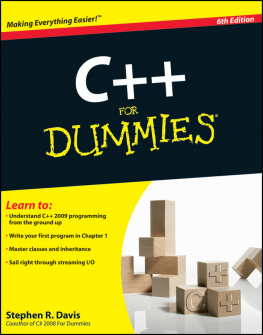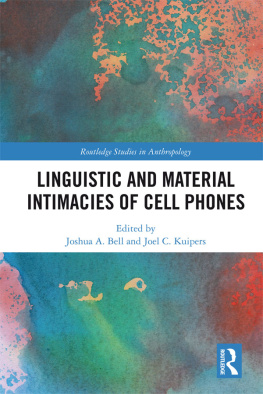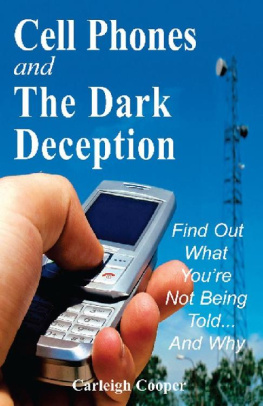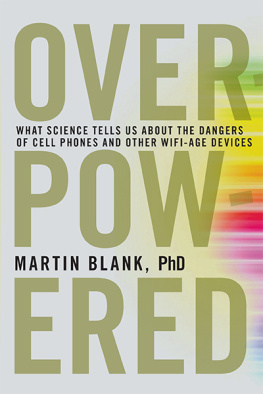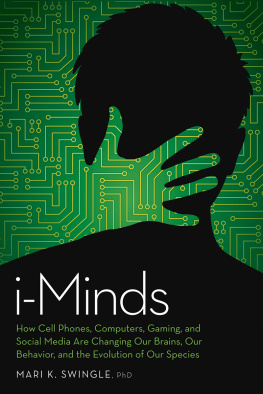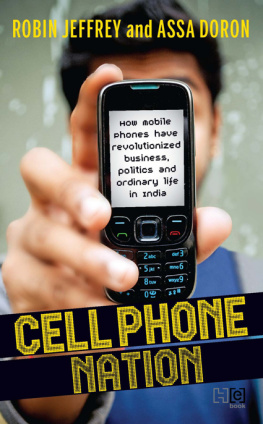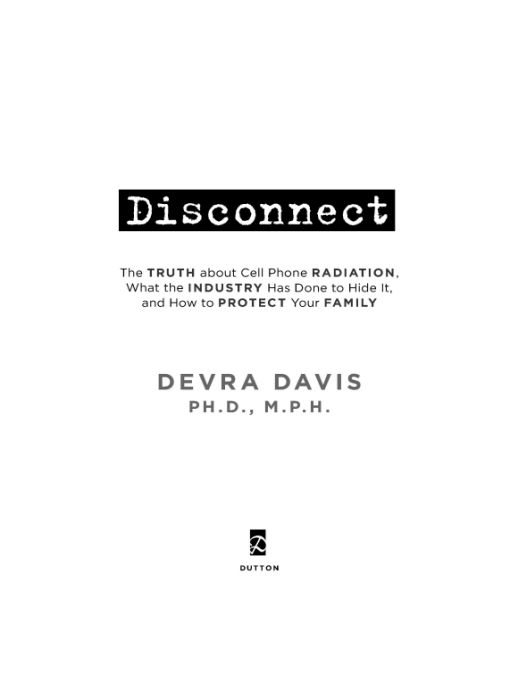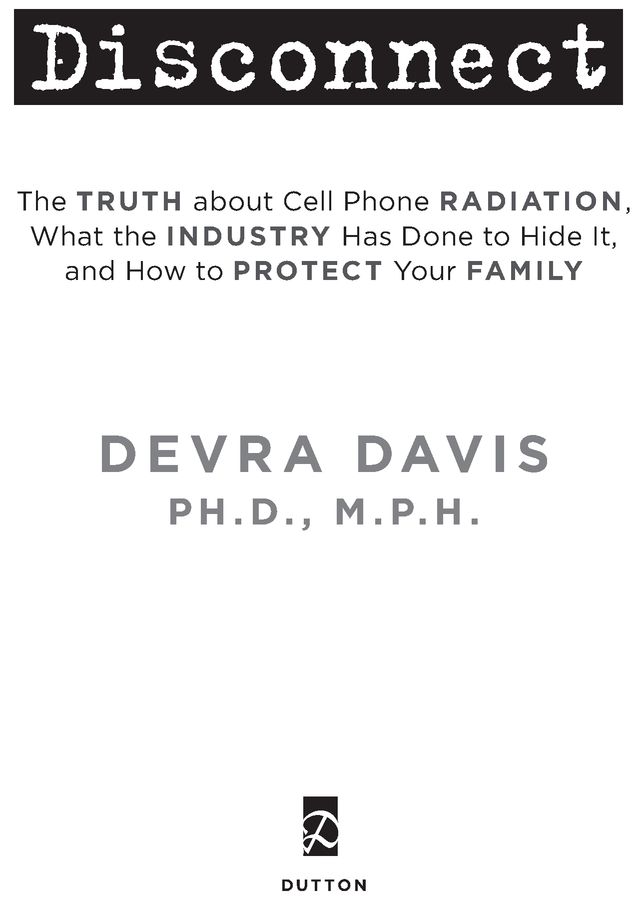Table of Contents
Also by Devra Davis:
When Smoke Ran Like Water
The Secret History of the War on Cancer
Ellie and Allen, Mindy and Dan, Ken,
Les, Lloyd, Michael and Gloria, and their families,
Keith and Pam
Foreword
If that were true, wed know about it!
I once had a short conversation about health effects of cell phone radiation with the current and a past director of the National Cancer Institute at a cocktail party following a public talk. They both dismissed the topic offhand: First, theres never been any evidence that electromagnetic fields can affect DNA. Thus, they simply cannot contribute to cancer risk; second epidemiological studies have never documented an increased risk of brain tumors from cell phone use; and third, there has been no increase in the global number of brain tumors, which, surely, wed have seen given the large number of people using cell phones today. Case closed. As this book will show you, just scratching the surface of what is known about health risks of cell phone electromagnetic radiation is enough to easily dismiss all three of these arguments. I knew that at the time. So what struck me was the degree to which these two brilliant men, outstanding doctors and world-class scientists, were utterly convinced that this was not a worthwhile area of scientific inquiry. The question in my mind continues to resonate to this day: How can this be?
The best answer Ive been able to come up with since then is that for most reasonable people, including the scientific leaders of our prestigious medical institutions, it is inconceivable that if cell phones caused health problems we wouldnt already know about it. If it were true that these devices cause harm, we would know!
I myself, a physician, a scientist, a patient being followed for a malignant brain tumor for the past eighteen years, lived with exactly the same assumption. I used a cell phone just like everybody else. I had heard, like my NCI colleagues, of all the studies that had never found a convincing link between cell phone use and cancer risk. That seemed reassuring enough. I was convinced, as well, that such technology could not possibly be released on the enormous scale that it has reached today without governments having demanded proof that there could be no health hazards from the widespread use of a new type of microwave radiation that practically everyone would be intensely exposed to for decades.
In fact, I had been using my cell phone for many years, in spite of being a brain tumor patient in remission, without any self-consciousness, until an impromptu dinner with the author of this book one summer evening in Pittsburgh. Dr. Davis had recently accepted the offer to head a Center for Environmental Oncology at the universitys Hillman Cancer Center and somebody had suggested we should meet. I was intrigued by the intelligence and the charm of this veteran of many courageous scientific explorations into the link between industrial practices and disastrous public health consequences. Then, my cell phone, which at that time I was carrying in my pocket, rang loudly and I noticed the horrified expression of my dinner mate when I answered the call by putting the phone directly to my ear. She practically stood up from her seat and shouted: What? You of all people are not using an earpiece?
After I finished my call, and gave her a quizzical look about her behavior, she asked me two plain questions that have remained engraved in my memory as the perfect conversation starter with anyone who thinks, like I did, that they know there cannot be a health problem with cell phone radiation:
1. Did you know that most cell phones come with a notice that says do not hold closer than one inch from your body?
2. Did you know that insurance companies refuse to provide coverage to cell phone companies and operators in case of claims of health damage from long-term operation of their devices?
This is when I realized how little I really knew about the studies so often referred to in order to dismiss any type of health concern about cell phones. And how much I was going to have to learn.
I didnt stop at what Dr. Davis told me that evening. Ive learned that in Science, the opinion of a single person, however smart and diligent, does not truth make. I did look up the studies. I read the thoroughly documented report of the Bioinitiative Working Group that was published in August 2007 by many of the leading scientists in this field after reviewing practically all the literature available at the time. What I found is precisely what this book describes: an immense disconnect between the common public and medical opinion about cell phone safety and what the data actually said.
A year later, Dr. Davis and I helped organize a consensus statement of twenty international scientists and oncologists to emphasize the importance of protecting children from cell phone exposure and the urgent need for more research on how electromagnetic fields from cell phones affect biological mechanisms sustaining health or causing disease.
I am proud today that she asked me to write the foreword for her book summarizing all she has found over the years. The politics of science and the pressures of business have not been kind to scientists such as Dr. Davis who have been among the first to call attention to a possible public health effect of new technology. We dont want to believe that our new toys to which we are so attachedand which bring in enormous profitscould also cause our demise or that of our children. But science is not about belief. Governments responsibility to their citizens should not be either. This debate brought forth with talent, clarity, and power of argument in this book by Dr. Davis should be about facts and about our choices in view of those facts. Let us hope that this is just the kind of conversation that will be starting.
David Servan-Schreiber, M.D., Ph.D.
Clinical Professor of Psychiatry, University of Pittsburgh; Adjunct Professor of General Oncology, M.D. Anderson Cancer Center, University of Texas; Lecturer, School of Medicine of Lyon, France; and author of Anticancer: A New Way of Life
KIDS, WELL GET BACK TO YOU
Who can protest and does not, is an accomplice in the act.
Talmud
Could cell phones be unsafe? When I first heard this idea about six years ago, I did not believe it and I did not want to believe it. I had been an early and enthusiastic adopter of this revolutionary technology, which I put to good use managing a staff of several dozen scientists in two different buildings at the National Academy of Sciences. I used it to stay in touch with my children and husband at odd times and places. I prided myself on being able to keep up with my grad students on the latest geeky applications. I knew that most scientists were convinced it was simply impossible for radio frequency radiation from phones to have any impact on human biology. But, as someone who has spent my entire professional career examining the links between the environment and health, I realized that, like the rest of us, science and scientists follow fads and fashions. Sometimes what everyone wants to believe turns out to be inconveniently wrong. Authorities in technologically sophisticated nations, like Israel and Finland, where phones had been used longer and more heavily, had issued warnings about safer use of phones. I began to ask why.







